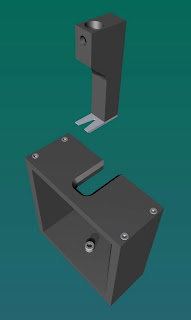760-001 - ASTM D429-03 - Double Shear Adhesion Jig

The ASTM D429-03 69.1 (Method G) is for testing the adhesion properties of rubber. The rubber is pre-formed onto 3 metal plugs. this gives a double rubber sandwich that can then be tested. This attachment holds the metal components of the sandwich and allows a double shear test to be performed.

